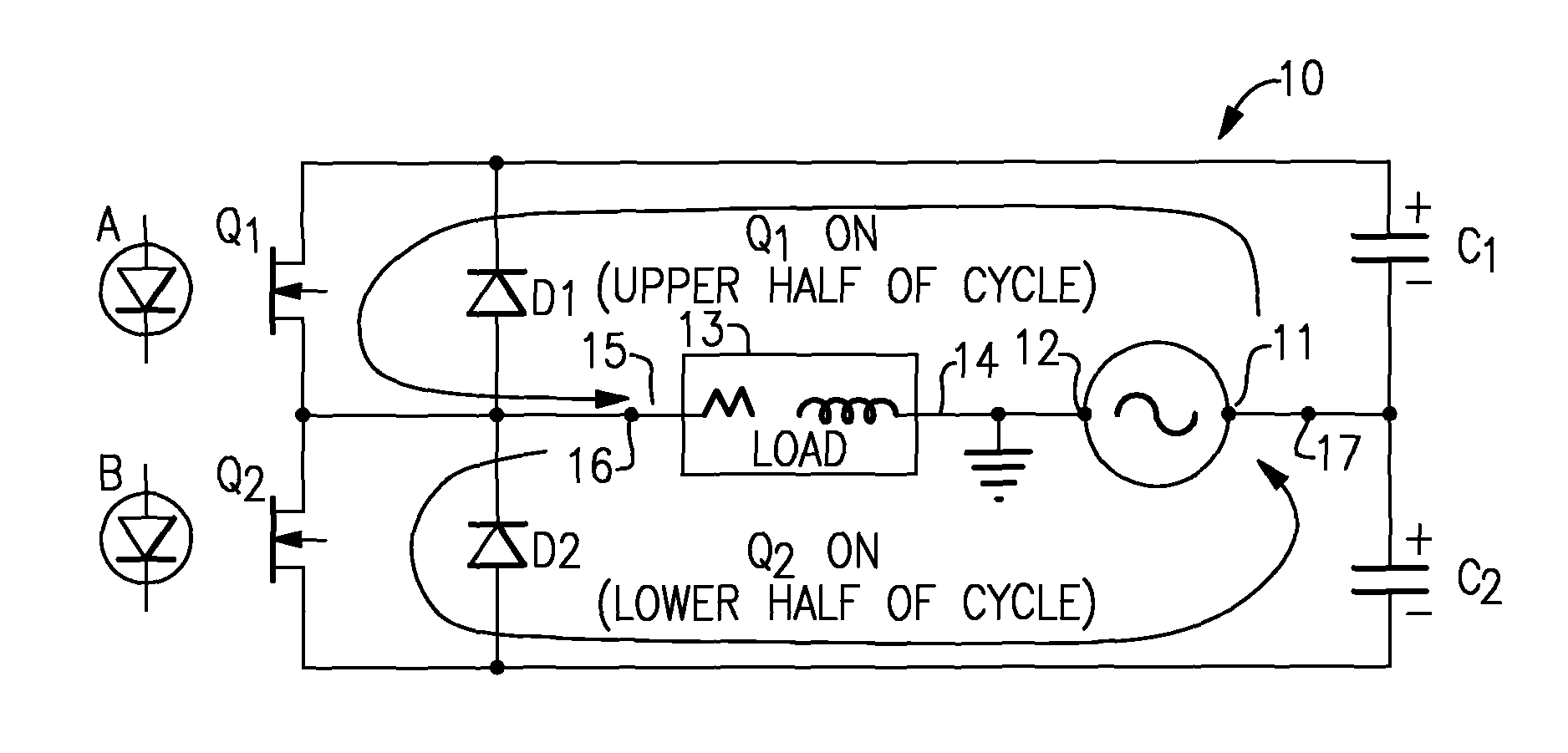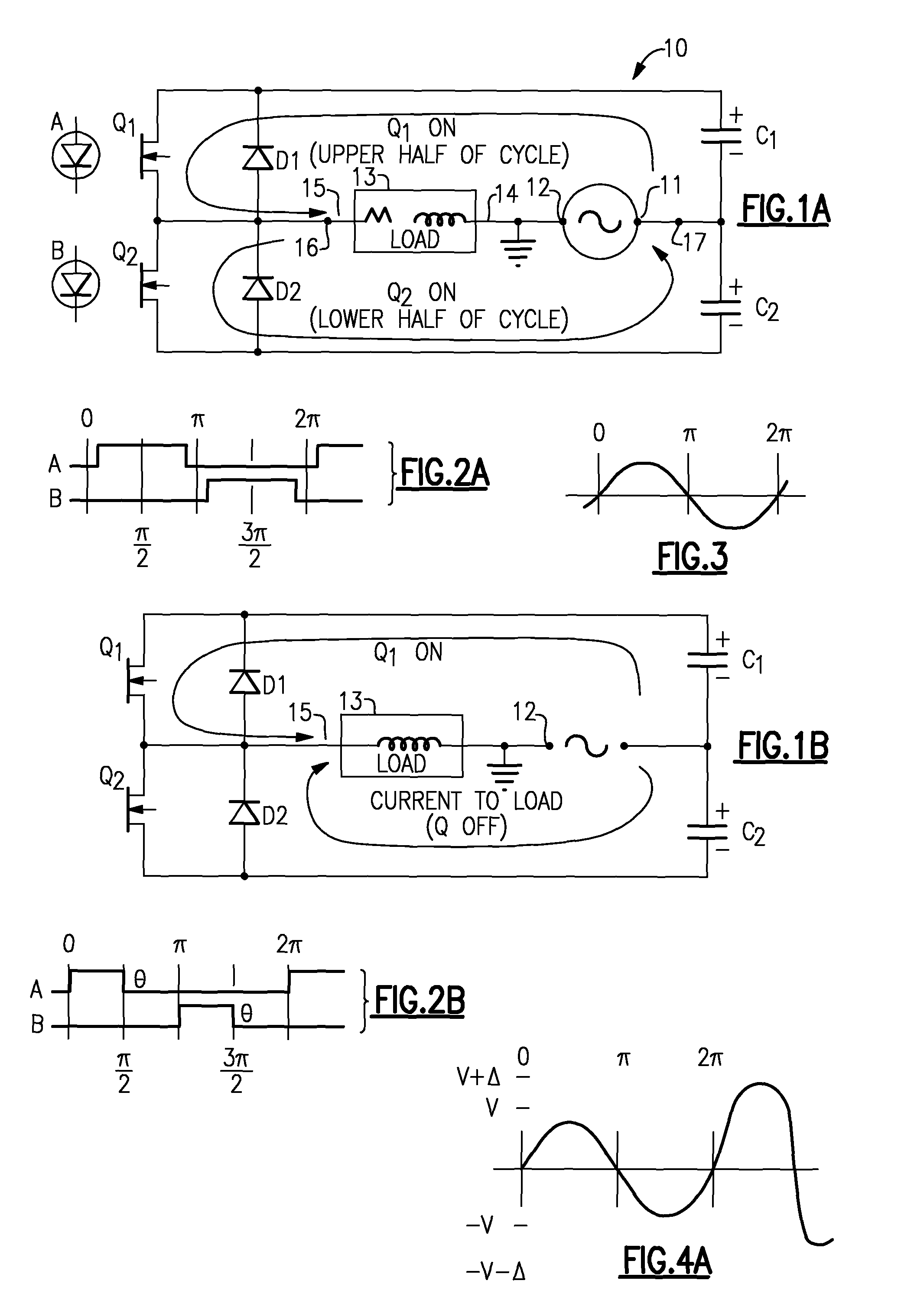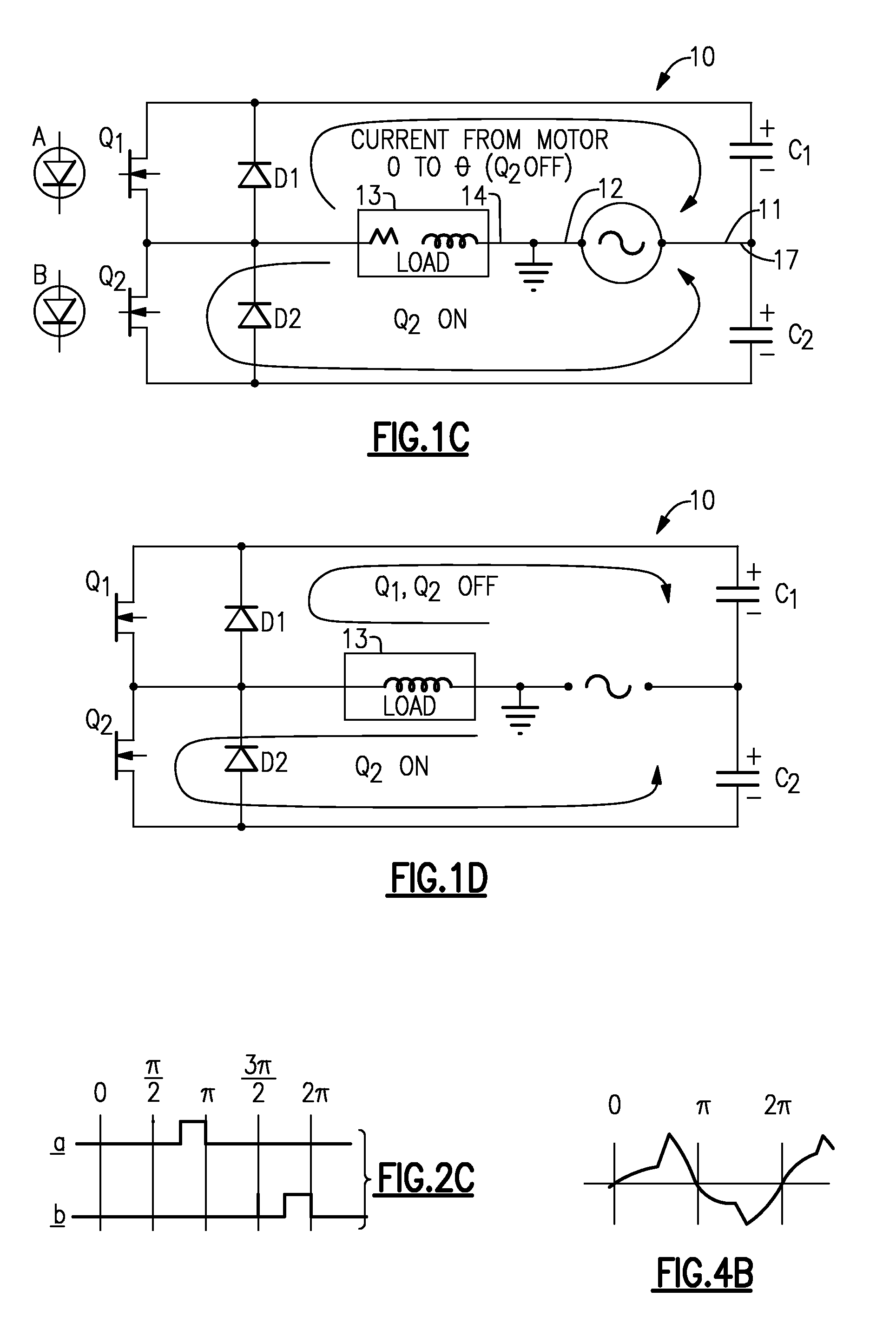AC line voltage conditioner and controller
a line voltage conditioner and controller technology, applied in the direction of electric motor control, electric/dynamo-electric converter starters, dynamo-electric converter control, etc., can solve the problems of system over-design, motor over-design, and actual applied voltage, i.e., the real component of the complex ac voltag
- Summary
- Abstract
- Description
- Claims
- Application Information
AI Technical Summary
Benefits of technology
Problems solved by technology
Method used
Image
Examples
Embodiment Construction
[0062]With reference to the Drawing, FIG. 1A is a basic schematic view of one embodiment of a motor voltage regulating circuit 10 employing the general concepts of this invention, and adapted to receive commercial single-phase AC line power from a source and then conditioning it and applying it to a load. Here, the voltage regulating circuit 10 has AC power inputs 11 and 12. Power input 11 is considered the “hot” or black-wire input and power input 12 is considered the “neutral” or white wire terminal, and is illustrated here as being at ground potential. These are connected to a source of AC line power, represented here by a wave symbol. This can be a source of nominal 117 VAC in North America or 220 VAC in North America or Europe. An AC load device 13, e.g., a single-phase induction motor has a pair of leads 14 and 15, with one lead 14 connected to the AC power terminal 12. The other lead 15 is connected to a terminal 16 of the regulating circuit 10. The “hot” power input 11 is co...
PUM
 Login to View More
Login to View More Abstract
Description
Claims
Application Information
 Login to View More
Login to View More - R&D
- Intellectual Property
- Life Sciences
- Materials
- Tech Scout
- Unparalleled Data Quality
- Higher Quality Content
- 60% Fewer Hallucinations
Browse by: Latest US Patents, China's latest patents, Technical Efficacy Thesaurus, Application Domain, Technology Topic, Popular Technical Reports.
© 2025 PatSnap. All rights reserved.Legal|Privacy policy|Modern Slavery Act Transparency Statement|Sitemap|About US| Contact US: help@patsnap.com



